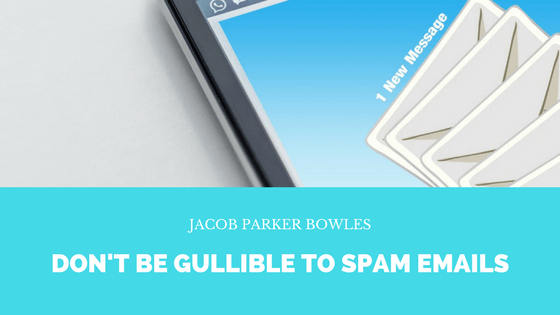If you have an email address, chances are you have received spam or have a spam folder full of useless emails. Regular email users can look at spam emails and be able to point them out quite obviously. Yet, many email marketers have crafted ways to get trick enough to follow through on the odd requests of random emails. Whether it be an odd request of sharing credit card information or how to invest in gold, many should be aware of how to spot spam and protect themselves from potential online fraud.
Typically, spam comes in the form of unsolicited emails. Spam emails have been around since the internet has entered the home in the 1990s. Marketers discovered that emails were a cost-effect way to solicit money from users. It was not until the early 2000s when email providers started filtering emails by keywords and repetitive patterns. This lead to the birth of the spam folder which is now used by most email providers.
The Gullible
There is no need to embarrassed about falling for scam emails because it can happen to anybody. Tech giants, Google and Facebook, got swindled out of $100 million by a man using simple social engineering. If some of the biggest internet corporations can get tricked into giving up money, so can you. These emails are created by scammers or marketers to be somewhat specific but vague enough for you to click on or engage with the email.
Protect Yourself
There are multiple ways to protect and educate yourself from potentially engaging with these emails. An easy rule would be to not click any links that a random email request of you. Many damaging software can be installed when you click on unidentified links, called phishing emails. Phishing emails try their best to create a context for you to click the link. Even familiar email addressing can be phishing you to click a foreign link. Always question the content of the email links you click on.
Phishing emails also try to collect your password information as well. Another way to spot faulty emails is to be aware of spelling mistakes. Sometimes spammers intentionally misspell words to avoid getting their mail put into the spam folder and into your inbox.
Of course, while the best thing you can do is simply not respond to suspicious emails, there are unconventional ways of standing up to hackers, as the man in a video for Mashable, James Veitch, demonstrates. He took matters into his own hands and responded to a scam email about gold in the most hilarious of ways by embarking on a long email chain with the email scammer demonstrating the scammer’s stupidity- essentially, conning the conman. As Veitch’s experiment demonstrates, scammers may not always be so intelligent, so as long you are on your guard and know what to look out for, you can avoid becoming a victim of fraud.
Check out the hilarious video below!

